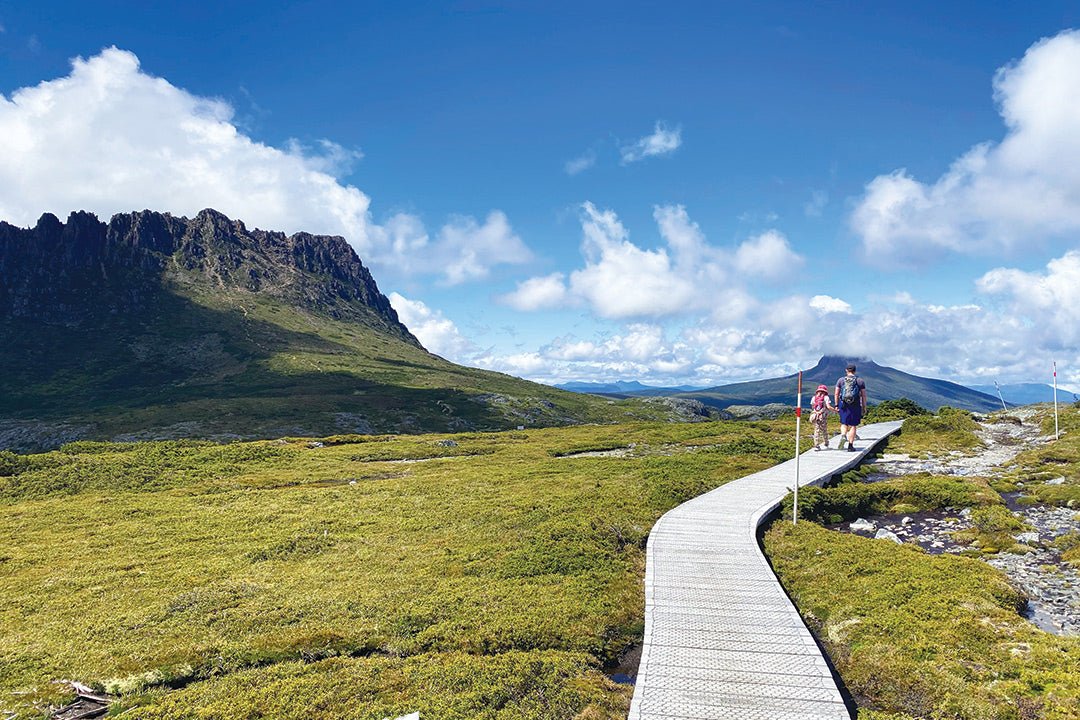

The Spirit of Tasmania has a new mainland home. Here’s everything you need to know about the move, plus some travel inspiration to fuel your next island-state adventure.
Road-trippers travelling to Tasmania can now bypass Melbourne. In October 2022, the Spirit of Tasmania ferry moved its mainland Australia base of 37 years from historic Station Pier in Port Melbourne to the regional city of Geelong. The move means passengers travelling from regional Victoria and interstate can avoid driving through the big smoke. But if you live in Melbourne or are transiting through the city, as many east-coast holidaymakers do, be prepared for a longer journey.
While Geelong is only 70km south-west of the CBD, the Princes Highway traffic snarls are notorious, especially crossing the West Gate Bridge. In theory, the journey should take just under an hour but, in reality, it can be much more as the popular (and most frequent) overnight sailings often coincide with morning and afternoon peak hour.
That said, the boarding and disembarkation process at the new Spirit of Tasmania Quay, in north Geelong, is infinitely more efficient. The $135 million terminal handles passenger vehicles and freight in a way the 168-year-old city facility never could. I sailed from Station Pier with a 22-foot caravan in January 2022 and the queues were monstrous. We sat stationary for a long time and held our breath as we squeezed around tight bends as the queue snaked towards the vehicle gangway. Both our outbound and return journeys were delayed by more an hour.
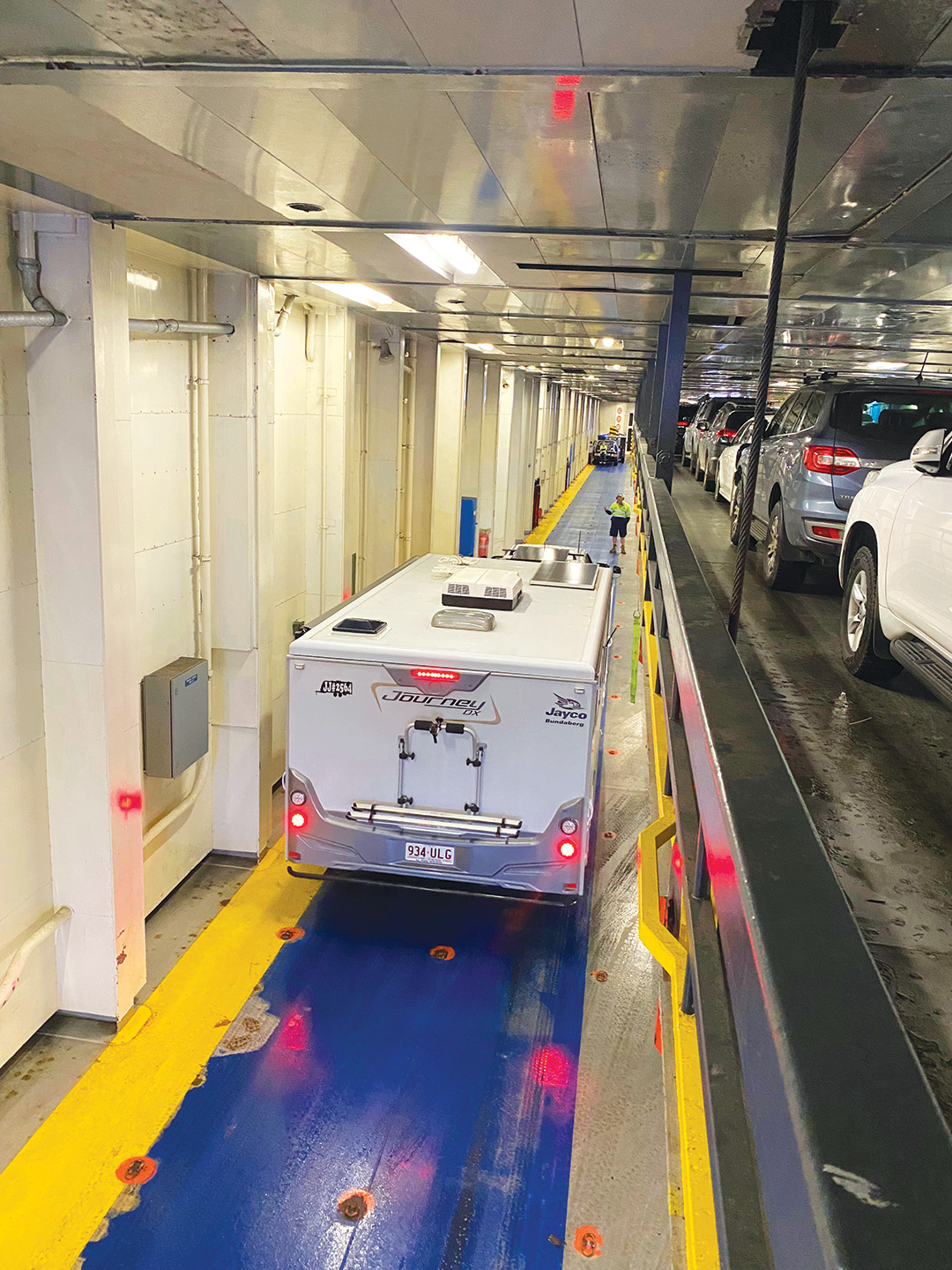
By contrast, on the inaugural Geelong to Devonport sailing on October 23, the ship was impeccably punctual, as was my return voyage (the sail time remains unchanged at 11 hours). Five large check-in lanes funnelled passenger vehicles swiftly through the undercover terminal (there’s a separate check-in for freight), and within 10 minutes we were on board. In fact, the boarding process was so efficient (the marshalling area accommodates up to 600 cars and caravans), that there wasn’t time to hop out and explore the new passenger terminal, which boasts a cafe, a play space perfect for younger children and pet exercise area.
Ship operator TT Line says the Geelong move was necessary to bring the facilities and service up to a modern standard and hopes to subsequently lure more regional and interstate travellers. The Spirit of Tasmania operates about 800 sailings a year, carrying more than a quarter of a million passengers. In 2021/2022, almost one third of departures were late. This is attributed to freight and passenger processing delays and congestion in the broader Port Melbourne area (Port Phillip Bay is home to Australia’s largest container port).
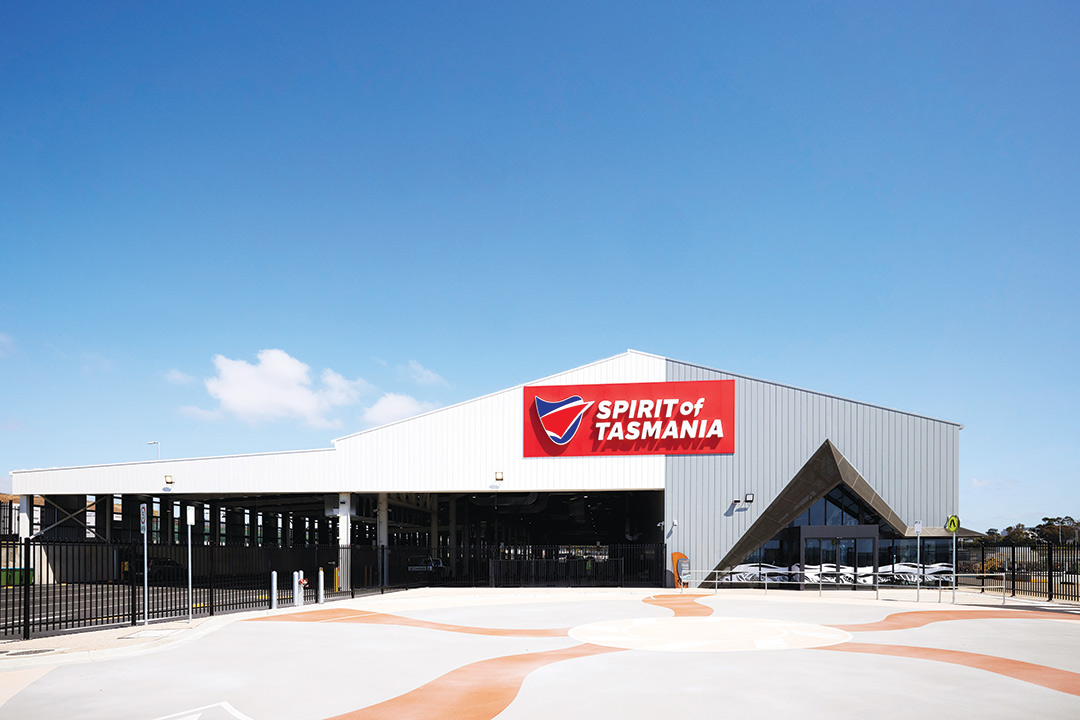
Overall, the new terminal is a winner. The location, less so. For me, as a Melburnian living in the eastern suburbs, the Geelong journey can more than double my drive time, especially when disembarking at 6.30am and being sucked into the maelstrom of cross-city gridlock. If you’re transiting through Melbourne, my advice is to get there early, book a weekend sailing or, even better, stay in Geelong overnight, as Victoria’s second-largest city has much to see and do.
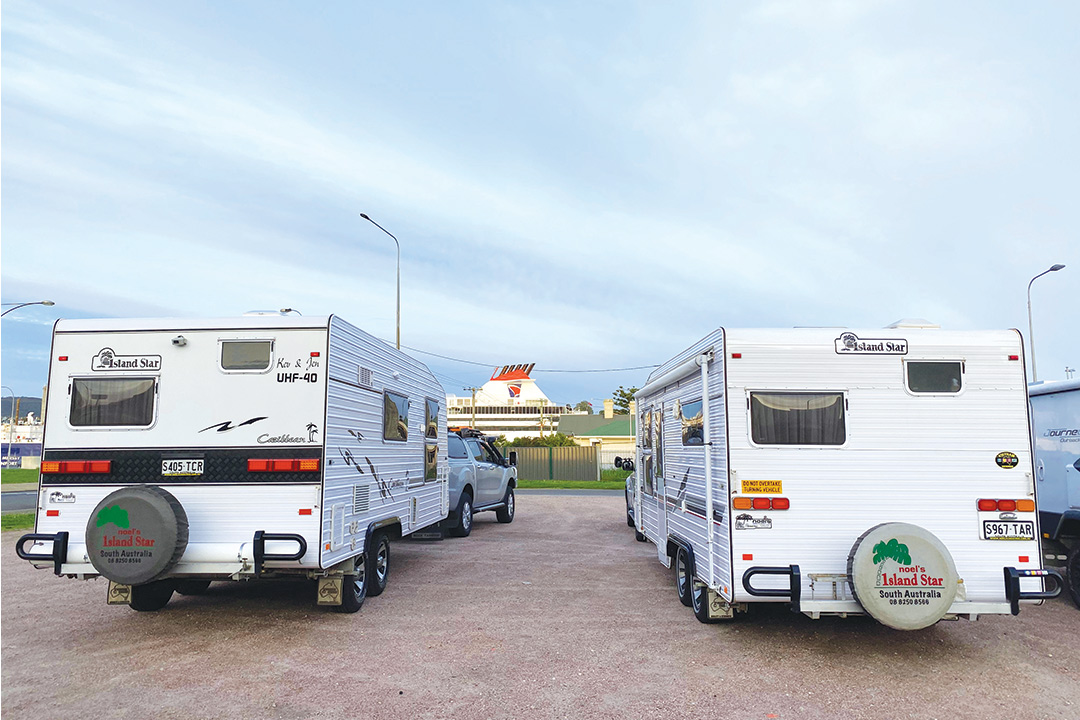
Exploring the Apple Isle
Once you are on Tasmanian soil, the Apple Isle has an abundance of caravan-friendly places (including some great national parks) to explore. Here’s my pick of destinations within a couple of hours of the Devonport ferry terminal to get you started.
Stanley
The heritage fishing village of Stanley is as picturesque as they come. The village is on the north-west coast of Tasmania, nuzzled between two bays intersected by the Nut, a volcanic plug hulking out of Bass Strait. Stanley was developed in the early 1800s as the Tasmanian headquarters of London-based wool merchant, the Van Diemen’s Land Company. Today, the village is a sleepy seaside hamlet of quaint heritage cottages tucked in the skirts of the Nut, one of Tasmania’s most unusual natural landmarks.
Getting rhere
Stanley is 125km west of Devonport on the Bass Highway, an easy drive peppered with great views of the beautiful coastline.
Stay
Unhitch at the Stanley Cabin & Tourist Park, on the shores of Tatlows Beach and walking distance to the Nut and village. The park has beachfront sites (tucked behind trees) and clean bathrooms with single-use fluffy bathmats.
Do
Visitors to Stanley make a beeline for the Nut. You can tackle the 143m-high monolith on foot – it’s a heart-racing 430m climb on a paved, zigzagging path – or zip up the chairlift. On top, follow the 2km Plateau Circuit (mostly flat) to four lookouts. Keep your eyes peeled for pademelons, wallabies, potoroos and nesting shearwaters.
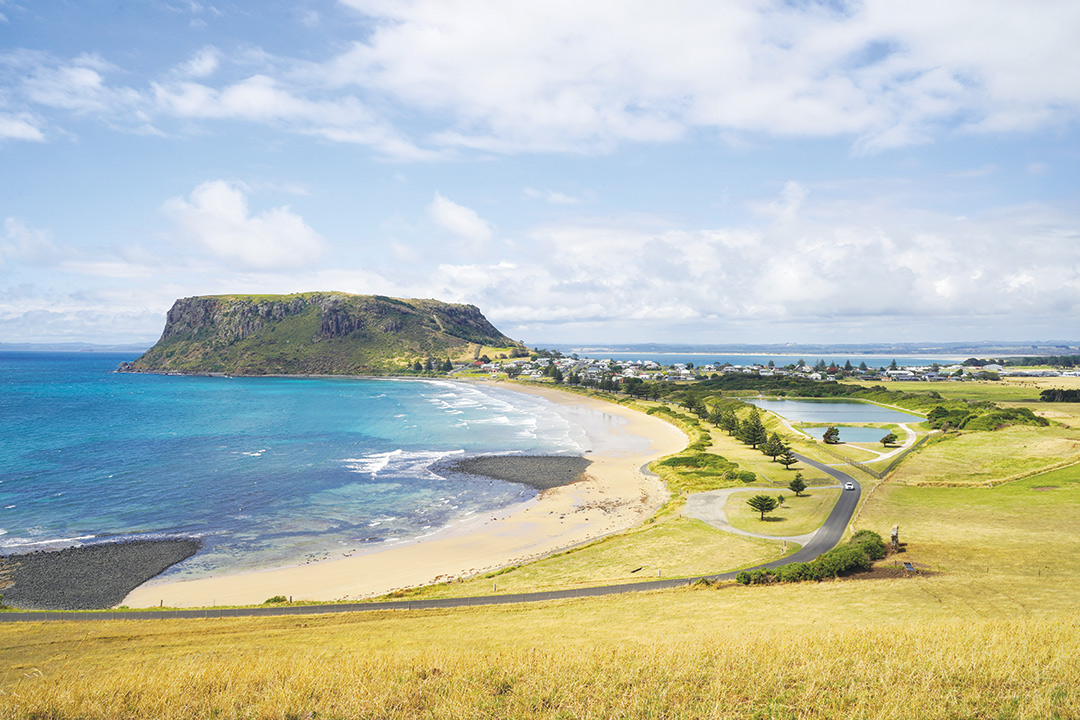
At the base of the Nut, you’ll find Stanley’s compact main street, lined with heritage cottages, boutiques and cafes. Call in to Joe Lyons Cottage, birthplace of the only prime minister, Joseph Lyons, born in Tasmania (1879) and husband to Dame Enid Lyons, the first woman elected to the House of Representatives. The preserved cottage is one of 15 heritage sites you can explore on the self-guided Stanley Heritage Walk (pick up a map from the visitor information centre). Visit Highfield Historic Site, a grand colonial-era homestead built by convict labour for the Van Diemen’s Land Company in 1826. Pull over on the downhill drive back to Stanley for a great view of the Nut.
Finish the day with a brisk swim at Tatlows Beach or Godfreys Beach (if you prefer some swell), then return at sunset to watch a colony of little penguins (also known as fairy penguins) waddle to their burrows (in summer).
Cradle Mountain
It’s a Tasmanian wilderness icon and so much more accessible than you think. In fact, Cradle Mountain-Lake St Clair National Park is little more than an hour’s drive from Devonport, meaning you can hop off the ferry and be unhitched well before lunchtime. The park is part of the Tasmanian World Heritage Wilderness Area, a colossal nature reserve spanning more than 1.5 million hectares – or almost one quarter of the island state. Two million years of glacial erosion and deposition have sculpted a landscape of rugged alpine peaks, lakes, moraines, windswept moors and ancient rainforests. This is prime walking territory and a great place to simply sit, immerse yourself in nature an breathe in all that lovely fresh Tassie air.

Getting there
From Devonport, Cradle Mountain is a 78km drive via the delightful town of Sheffield (stock up on fresh groceries here as you can’t bring any perishable fruit and veg into Tasmania). Sections of the drive are steep and windy but there are plenty of turn out lanes. Be careful on the return trip as our vehicle brakes were smoking!
Stay
The Cradle Mountain Holiday & Caravan Park is on the fringe of the national park across the road from the visitor centre. The park has the aesthetic of a campground – think private sites enveloped by nature – with the mod cons of a tourist village.
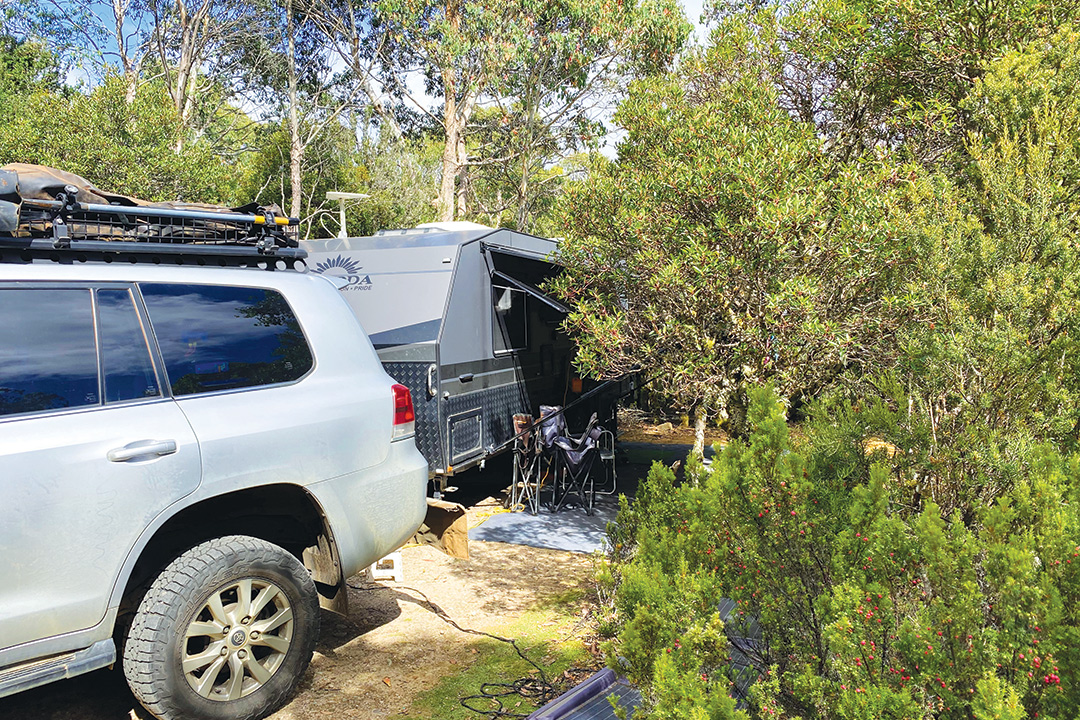
Do
Cradle Mountain is all about walking – and there’s a trail to suit almost all abilities. Leave the car behind and catch the shuttle from the visitor centre (no private vehicles are allowed in the park during the day). Disembark at the last stop, Dove Lake, and follow the 6km circuit (mostly flat) around the lake, framed by the twin dolerite spires of Little Horn and the Cradle Mountain massif. The trail traverses quartzite beaches, glacial rocks, waterfalls and the fairy-tale Ballroom Forest – home to a grove of moss-sheathed myrtle-beech trees. For a more strenuous walk, tackle the Cradle Mountain Summit. It’s an arduous 13km climb with a long stretch of rock scrambling at the end but the views are stupendous. If you don’t make the summit, the views at Crater Lake and Marions Lookout on the way up are breath-taking.
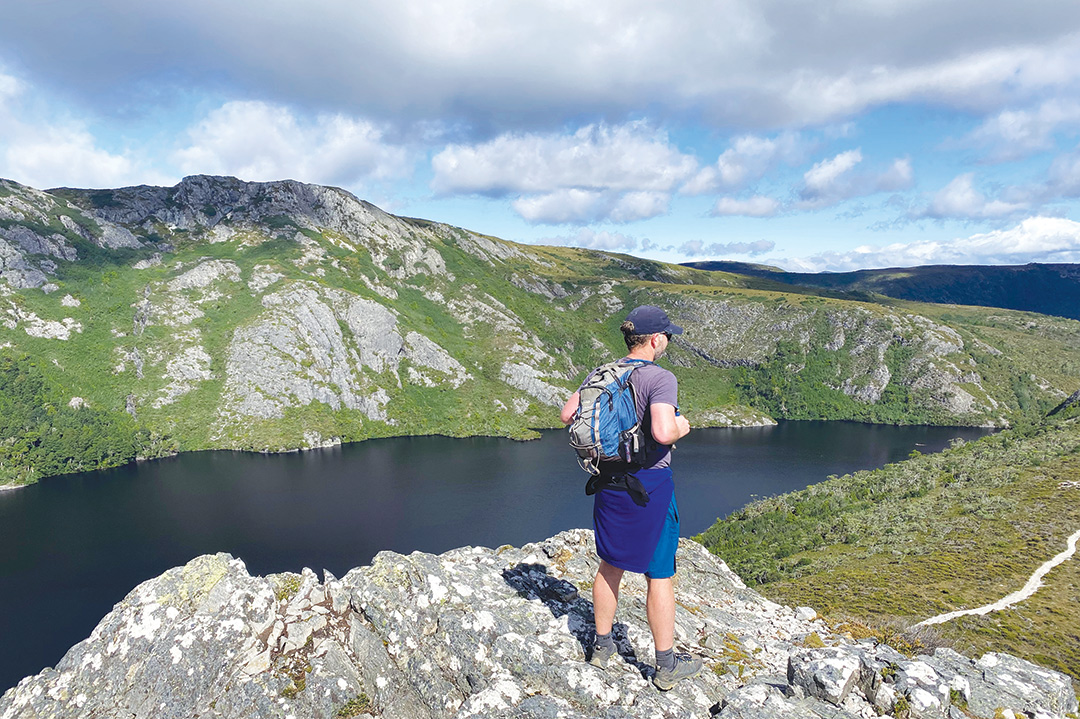
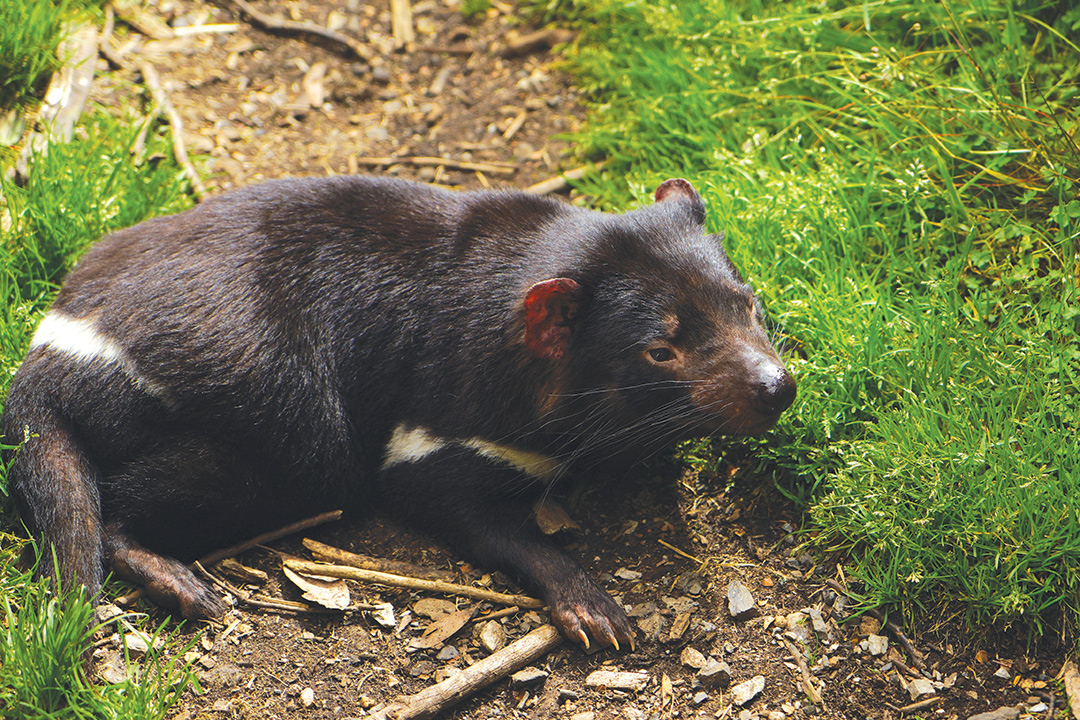
For a short scenic stroll, try the 1.1km Enchanted Walk near the ranger station. Don’t miss the chance to see Tasmania’s fauna emblem up close at the Devils @ Cradle, a breeding sanctuary for Tasmanian devils that’s also home to spotted-tail and eastern quolls.
Launceston
Too often Launceston plays second fiddle to Hobart, but this handsome riverfront city deserves top billing on any Tasmanian road trip. Straddling the North Esk and Tamar rivers, Launceston – Australia’s third-oldest city – is a patchwork of glorious heritage buildings and green wedges enveloped by countryside, with Tamar Valley wineries at its doorstep. Here, you can find culture, nature and history in equal measure.
Getting there
Launceston is 100km south-east of Devonport via Highway 1 (dual carriageway).
Stay
The BIG4 Launceston Holiday Park is centrally located, a walkable 2km from the city centre and Cataract Gorge. The park has updated amenities and hillside city views but is next to a busy highway.
Do
Start your visit with an excursion to Cataract Gorge, where the South Esk River squeezes between spectacular cliff faces, less than 3km from the CBD . Bring your swimmers and take a dip in the swimming pool at First Basin, set between the river and lush lawns ripe for picnicking. There are two ways to cross the river: on the 457m-long chairlift (the world’s longest single-span chairlift), or via the historic Alexandra Suspension Bridge. Step through the peacock-dotted gardens abloom with native and exotic species and follow the cliffside Cataract Walk, tracing the river north through the gorge.
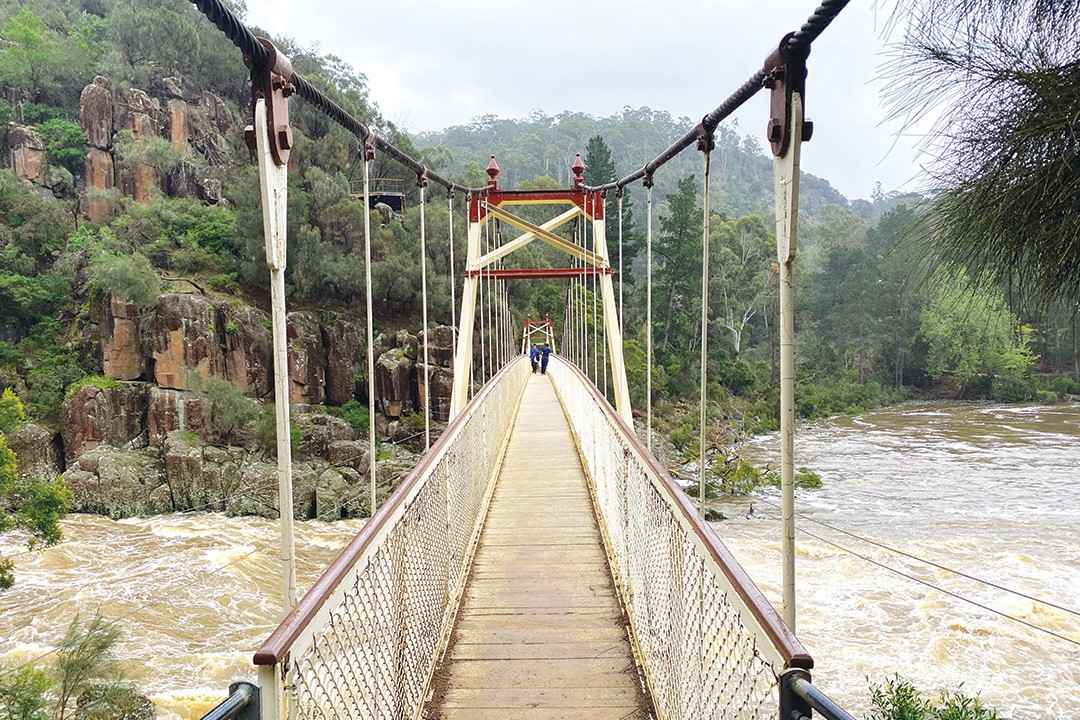
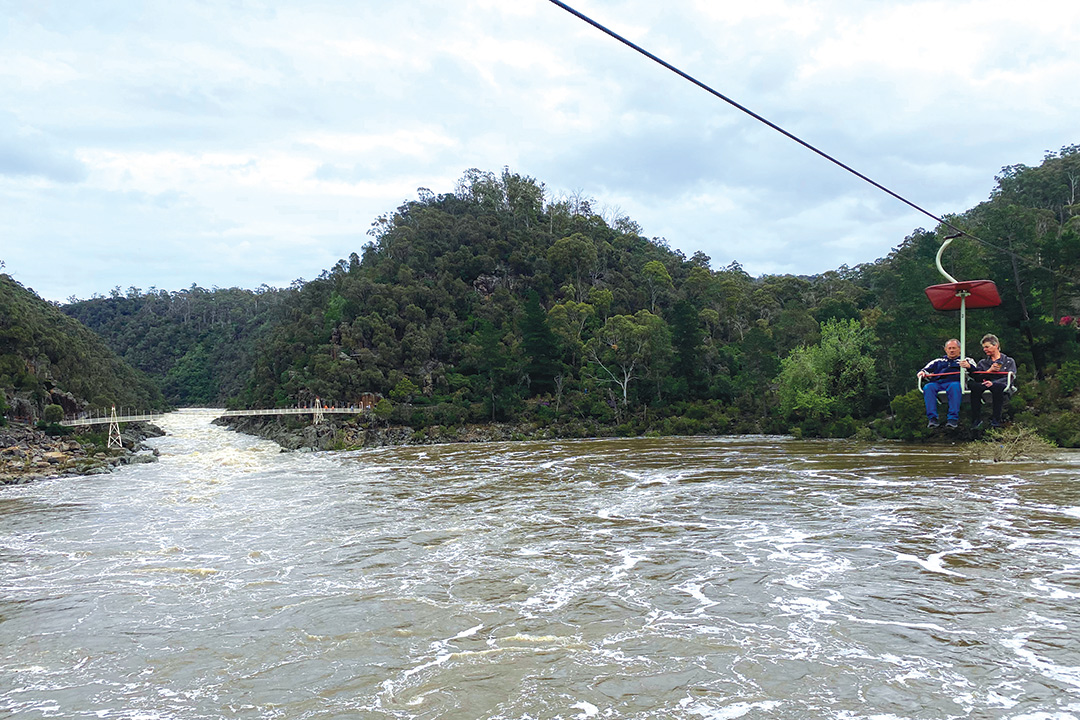
In the city, visit the Queen Victoria Museum and Art Gallery. Set across two sites, the gallery is a showcase of history, natural science and art, featuring a thylacine exhibit, planetarium, First Nations artwork and locomotives housed in a converted railway workshop. Splash out on a meal; Launceston is Australia’s second UNESCO City of Gastronomy (try the Saturday Harvest Market), and don’t leave town before sampling the region’s cool-climate wines on the Tamar Valley Wine Trail (maps available from the visitor centre).
Devonport
It’s tempting to zip straight through Devonport, but this compact port city on the banks of the Mersey River is worth a stay. Beaches, history and farm gates make Devonport a deserving bookend to your Tassie adventures.
Stay
Mersey Bluff Caravan Park has an enviable position on an elevated headland jutting out into Bass Strait. The tiered sites have ocean views and are frequented by wallabies and pademelons.
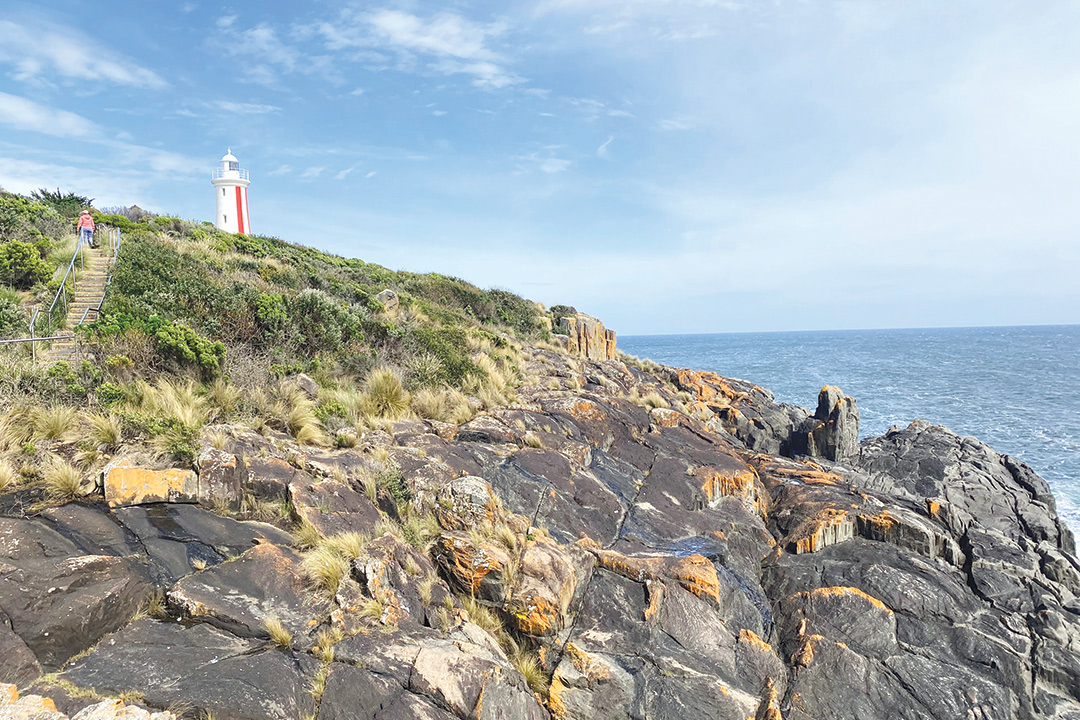
Do
Take a stroll to Mersey Bluff Lighthouse (a short walk from the caravan park) and follow the coastal trail to the Spirit of the Sea sculpture at Aikenhead Point, at the mouth of the Mersey River. Opposite is the Bass Strait Maritime Centre, telling the region’s seafaring history in the former harbour master’s residence. Visit the homestead of another illustrious Tasmanian at Home Hill, the former abode of past Prime Minister Joseph Lyons, whose family lived there for more than half a century from 1916.
Continue your historical journey aboard Don River Railway, a heritage train ferrying passengers between the tiny village of Don and Coles Beach. Drop into the Devonport Regional Gallery for a contemporary art fix, then fossick through thousands of treasures from yesteryear at the four-level Antiques Emporium. Escape the city at the Tasmanian Arboretum, a 35ha park of temperate trees and lakes where you can spot platypus. On the way back, call in for a tipple at Spreyton Cider Co and La Villa Wines.
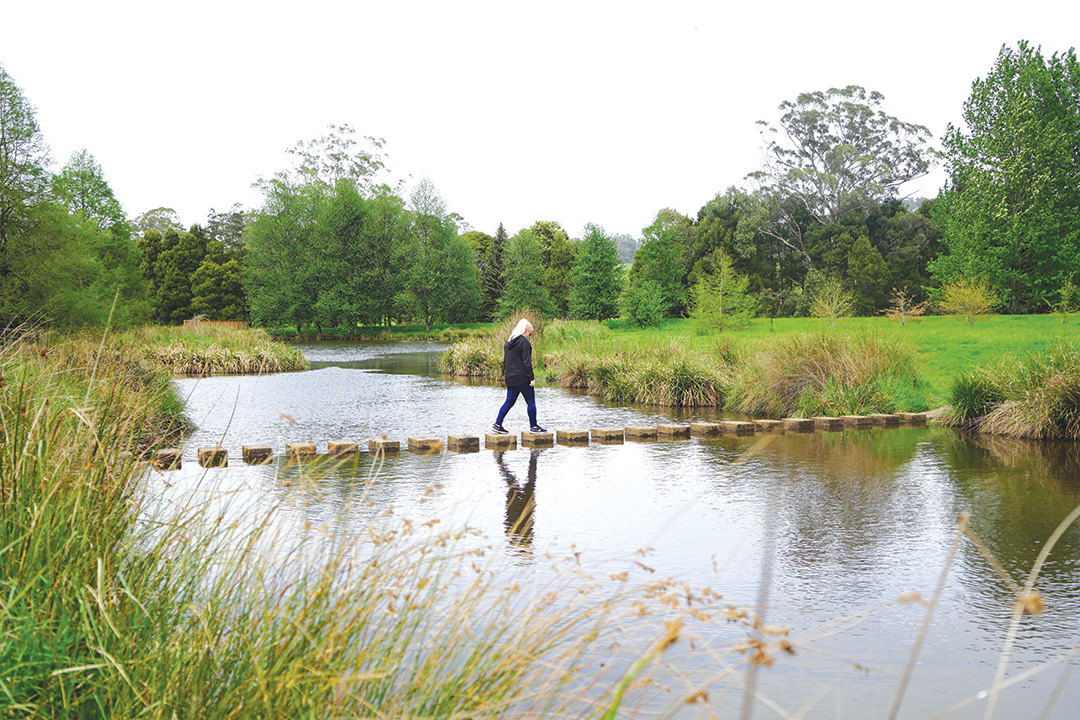
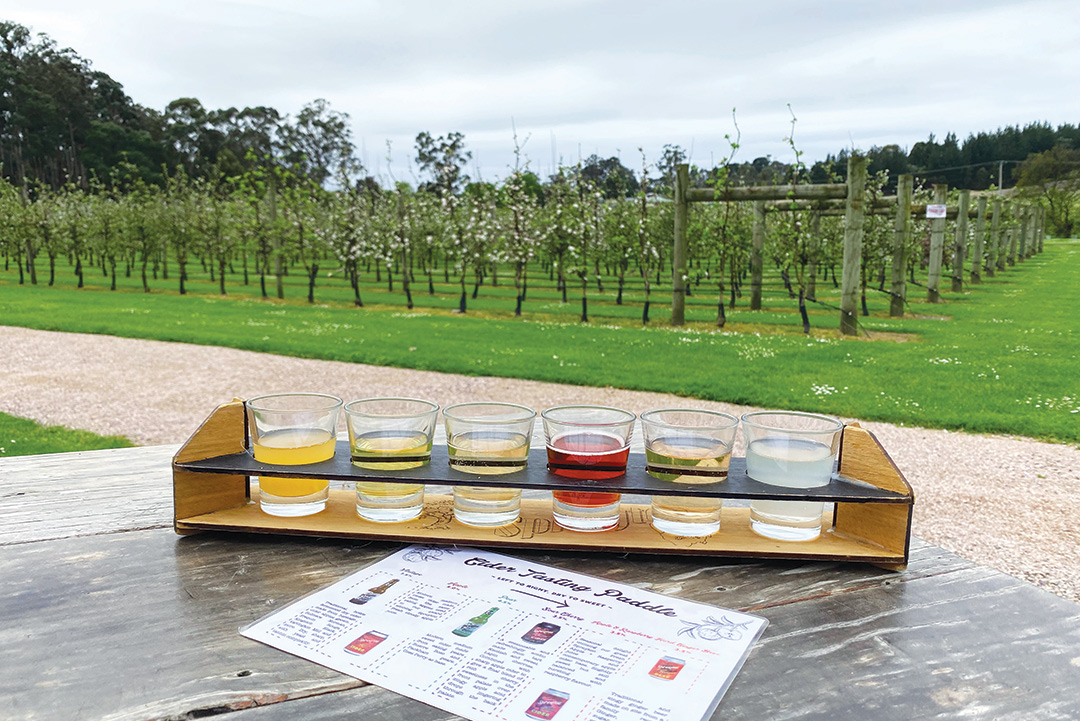
Caravanning on a budget
Tasmania also has plenty of free camping (or at least low cost) camping options with easy access to some fascinating places, but they can get quite busy during peak periods (such as a long weekend, holiday periods and the summer months), so be sure to plan ahead and arrive early as many free campsites are first-in, first-served. To get some insights on how to free/low-cost camp, click this link.
For more Tasmanian adventure itineraries see Catherine Best’s book Ultimate Caravan Trips Australia.
THE NEXT STEP
If you want to learn the latest caravan news, find the most innovative new caravans and camping gear or get inspired to plan your next adventure in the great outdoors, subscribe to our weekly newsletter. We promise to send you only the best content.







